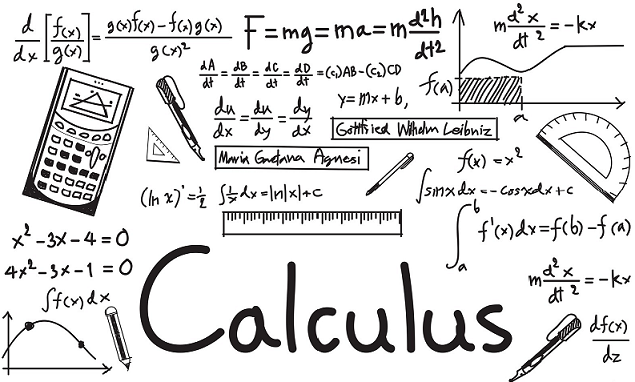why?
Calculus was created to solve some problems that other branches of math were not adequate to treat:
- determination of tangents to various curves (e.g. to determine the course of a light ray after it strikes the surface of a lens)
- finding the minima/maxima (e.g. determination of the maximum range of a projectile, maximum/minimum distance of a planet that is moving about the sun)
- length of curves, areas and volumes of figures bounded by curves
To solve these problems the following concepts are needed:
- limit (fundamental to formulate the derivative and the integral)
- derivative
- integral
The concept of a function
A function is the relation between variables (whose value can be expressed numerically), the most effective mathematical representation of a function is through a formula like the one below:
The above formula says that when $t=2$ then $s=16 \cdot 2^2 = 64$ and is represented as $s_2$, for each value of $t$ there’s a corresponding value of $s$, in the above form $t$ is the independent variable and $s$ is the dependent variable. If we solve the equation above for $t$ we have:
Now $s$ is the independent variable and $t$ is the dependent variable
The notation $f(x)$ can also represent functions without an extensive verbiage, e.g. $f(x) = x^2 - 9$, this notation also has the advantage of telling us which is the independent variable, if we want to calculate the value of the function the notation we can use something like $f(3)$ which is the value of $f(x)$ when $x = 3$.
A formula can also be represented as a curve (this method of interpreting formulas geometrically is known as analytic geometry), let’s represent the following function below using a curve:
The function above is simple in that to each value of $x$ there’s a corresponding value of $y$, whoever the concept of a function does not require this, for example the function:
does not have a valid value when $x = 0$, this means that the function exists for each value of $x$ other than $0$.
The concept of a function then doesn’t require that there’s a $y$ for every $x$ but it does require a $y$-value for each value $x$ in some collection/set of $x$ values, the collection of $x$ values for which a $y$ value exist is called domain and the collection of the corresponding $y$ values is called range.
Image taken from https://wordsmithofbengal.wordpress.com/2021/08/02/dr-philos-the-creative-fantasy-of-differential-and-integral-calculus/

